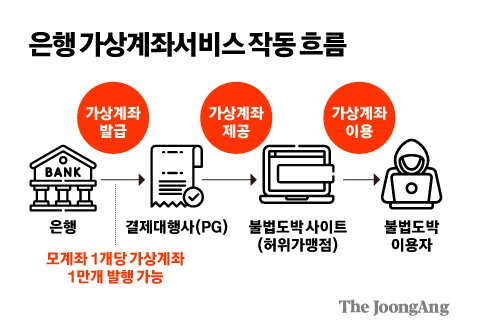
여러분들은 일상에서 은행을 얼마나 많이 이용하십니까? 친구들과의 회식 후, 회식비 송금, 미래를 위해 들어놓은 적금, 현금이 필요할 때 이용하는 ATM 출금, 여행에 필요한 환전업무 등등 우리는 은행을 매우 다양하게 이용하고 있다. 그만큼 은행은 인류와 뗄레야 뗄 수 없는 곳이 되었다. 그렇다면 지금의 은행은 어떻게 만들어졌을까? 자본주의의 역사와 더불어 함께 발달해 온 은행의 역사를 함께 알아보자.
우리가 현재 이용하는 화폐의 개념은 금과 은을 대체하는 것에서 출발했다. 은행의 출발도 이것과 비슷하다. 그러나 큰 틀에서 보면 금융의 시작은 B.C 4000년 이전에 메소포타미아에서 만들어진 점토판에서 확인할 수 있다. 당시의 점토판을 해석해 보면 지급해야 할 물품과 시점을 구체화하여 점토판에 기록했다고 한다. 이는 인류 최초의 어음과 같은 역할을 했었던 점토였던 셈이다. 많은 시간이 지나 르네상스의 시대로 넘어오면서 지리적인 이점을 이용하여 유럽의 교역중심지가 된 이탈리아에서 은행의 자취를 찾아볼 수 있다. 상인들은 다양한 국가들에서 온 다른 상인과 거래를 하기 위해 이탈리아를 찾아오게 되는데, 서로 사용하는 화폐가 달라 환전이 필요했다. 당시의 이탈리아에서는 상인에게 이러한 환전과 같은 금융 서비스를 제공하는 환전상이 있었는데 이러한 환전상들 대부분이 유태인들이었다. 유태인들은 대부업도 함께 운영하며 부를 축적했다. 유태인 환전상들은 탁자 위에 화폐를 펼쳐 놓고 다른 일을 하기도 했다.
이 당시 탁자를 뜻하던 라틴어인 방카(Banca)는 지금까지 이어져 은행을 뜻하는 뱅크(Bank)의 어원이 되었다. 르네상스 시대 이후로 은행은 더욱 형태를 갖추어 나가기 시작했다. 오늘날 은행은 고객이 은행에 납입한 예금만 가지고 대출을 하지 않는다. 예금을 받으면 자동으로 없던 돈이 만들어지고 그 돈으로 대출을 하고 있다. 실재하지 않는 돈을 융통해 이자를 받으며 수익을 낸다는 것이다. 은행이 이와 같이 이윤을 창출하는 방식은 17세기 영국의 금 세공업자로부터 시작되었다. 당시의 영국인들은 화폐로 금을 사용했는데, 금의 무게가 꽤 무겁다보니 소지하고 다니며 거래하기 매우 불편했다. 게다가 도난의 위험도 늘 도사리고 있었다. 그래서 튼튼한 금고가 있는 세공업자에게 금을 맡기고 보관증을 받게 된다. 그러자 이 보관증이 금의 역할을 대신하기 시작했다. 그리고 세공업자는 사람들이 금 대신에 보관증으로 거래를 한다는 걸 알게 되면서 그때까지 금을 금고에 대신 보관해주며 보관료를 얻어왔던 세공업자들은 이 금을 다른 사람에게 대출해주고 이자를 받으면 더 큰 돈을 벌 수 있겠다는 생각을 하게 된다.
금 역할을 대신 하게 된 보관증으로 대출을 하기 시작한 세공업자는 창고에 금이 없어도 보관증을 만들어 대출을 해주기도 했다. 그렇게 만들어진 이자로 엄청난 부를 축적했다. 그러자 사람들이 생각보다 빠르게 돈을 버는 세공업자에게 의심을 품기 시작했다. 결국 사람들은 금 세공업자에게 맡겨 놓은 금을 모두 다 찾아가게 되었고, 없는 금으로 보관증을 만들던 세공업자는 파산하게 되었다. 세공업자들은 파산했지만 그 외에도 은행업의 발달은 지속된다. 세공업자들의 파산은 오히려 은행업을 본격적으로 발달시킬 수 있는 전화위복의 기회가 되었다. 당시 전쟁으로 인해 많은 돈이 필요했던 영국 왕실이 금 세공업자들에게 금 보유량의 3배까지 대출을 할 수 있게 허가를 해준 것이다. 이는 금이 없더라도 금이 있다는 보관증을 만들 수 있도록 정부가 허가를 해준 것이라 볼 수 있다. 당시 영국 왕실의 허가를 받은 세공업들은 없는 금을 만들어 내는 능력을 바탕으로하여 현재 은행의 모태가 되었다.
현대의 은행은 예금자가 납입했던 금액들 중 고객에게 줄 금액으로 쌓아 두어야 하는 일정 비율을 제외한 나머지 돈들을 개인과 기업들에게 대출해주었다. 이와 같이 남겨두어야 하는 금액의 비율을 ‘지급준비율’이라고 하고 이러한 시스템을 지급준비제도(Reserve Requirement System)라고 한다. 은행은 이 지급준비율 외의 나머지 돈은 다른 개인에게 대출을 해주는 시스템으로 운영되고 있다. 대한민국의 법정 지급준비율은 7%이다. A가 은행계좌에 10만원을 예금하면 통장에는 10만원이 찍히게 된다. 그러나 은행은 이 지급준비율을 근거로 실제론 7천 원만 남겨놓고 나머지 9만3천 원을 B에게 대출해줄 수 있다. 이렇게 현대 은행의 가장 기본이 되는 수익구조는 17세기 금 세공업자의 방식에서 크게 벗어나지 않고 있다. 이와 같은 과정이 반복되면서 시장에 흘러드는 화폐의 양이 늘어나고 경제가 팽창할 수 있었다. 자본주의가 지금의 윤택한 생활을 영위하게 만든 것에는 은행이 돈을 만들어내는 이와 같은 방식의 영향도 크게 나타난다.
*필자/ 정길선.
노바토포스 회원, 역사학자, 고고인류학자, 칼럼니스트, 러시아 과학아카데미 유라시아 고고인류학연구소 연구교수.
*아래는 위 기사를 '구글 번역'으로 번역한 영문 기사의 [전문]입니다. '구글번역'은 이해도 높이기를 위해 노력하고 있습니다. 영문 번역에 오류가 있을 수 있음을 전제로 합니다.<*The following is [the full text] of the English article translated by 'Google Translate'. 'Google Translate' is working hard to improve understanding. It is assumed that there may be errors in the English translation.>
'Profit from customer deposits' Started with 17th century British goldsmiths - History of banking
Columnist Jeong Gil-seon
How many times do you use banks in your daily life? After a dinner with friends, sending money for dinner, saving for the future, withdrawing cash from an ATM when you need it, exchanging currency for travel, etc. We use banks in many different ways. Banks have become an inseparable part of humanity. So how did today's banks come to be? Let's learn about the history of banks that has developed along with the history of capitalism.
The concept of currency that we use today started as a replacement for gold and silver. The origins of banking are similar to this. However, in a larger context, the beginning of finance can be confirmed on clay tablets made in Mesopotamia before 4000 B.C. If we interpret the clay tablets of that time, it is said that the goods to be paid and the time were specified and recorded on the clay tablets. This is like the clay that played the role of the first promissory note of mankind. After a long time, during the Renaissance, Italy became the center of trade in Europe, taking advantage of its geographical advantages. Merchants came to Italy to trade with other merchants from various countries, and since they used different currencies, they needed to exchange money. At that time, there were money changers in Italy who provided financial services such as money exchange to merchants, and most of these money changers were Jewish. Jews also operated money lending businesses and accumulated wealth. Jewish money changers would spread money on a table and do other work.
The Latin word for table at that time, banca, has continued to be the origin of the word bank. Since the Renaissance, banks have taken on a more formal form. Today, banks do not lend money based solely on deposits made by customers. When they receive deposits, money is automatically created out of thin air, and they lend money with that money. This means that they borrow money that does not actually exist, earn interest, and make a profit. The way banks create profits like this started with goldsmiths in England in the 17th century. At that time, the British used gold as currency, but because gold was quite heavy, it was very inconvenient to carry around and trade. In addition, there was always a risk of theft. So they entrusted their gold to goldsmiths who had strong safes and received deposit certificates. Then, these deposit certificates began to take the place of gold. And when the goldsmiths realized that people were trading with deposit certificates instead of gold, the goldsmiths who had been storing gold in their safes and earning storage fees until then thought that they could make more money by lending this gold to others and receiving interest. The goldsmiths who started lending with deposit certificates that took the place of gold would even make deposit certificates and lend them out even when there was no gold in the warehouse. They accumulated enormous wealth with the interest they earned that way. Then, people began to be suspicious of the goldsmiths who were making money faster than expected. Eventually, people started to take all the gold they had entrusted to the goldsmiths, and the goldsmiths who had been making deposit certificates with gold that they did not have went bankrupt. Although the goldsmiths went bankrupt, the development of banking continued. The bankruptcy of the goldsmiths actually became an opportunity to fully develop banking. At that time, the British royal family, which needed a lot of money due to the war, gave permission to goldsmiths to lend up to three times the amount of gold they had. This can be seen as the government giving permission to create a certificate of deposit even if there was no gold. The goldsmiths who received permission from the British royal family at that time became the ancestors of today's banks based on their ability to create gold that did not exist. Modern banks lend the remaining money to individuals and businesses after deducting a certain percentage of the money deposited by depositors from the amount that must be saved as money to be paid to customers. This percentage of money that must be set aside is called the 'reserve requirement ratio', and this system is called the reserve requirement system. Banks operate a system in which they lend the remaining money to other individuals. The legal reserve requirement ratio in Korea is 7%. If A deposits 100,000 won in a bank account, 100,000 won will be recorded in the passbook. However, based on this reserve ratio, the bank can actually keep only 7,000 won and lend the remaining 93,000 won to B. In this way, the most basic profit structure of modern banks does not differ much from the method of 17th century goldsmiths. As this process was repeated, the amount of money flowing into the market increased and the economy was able to expand. The way banks create money also had a significant influence on the fact that capitalism has enabled us to lead today's affluent lives.




![돈 되는 거의 모든 것에 영향 준다, '금리'로 풀어낸 시장 메커니즘[BOOK]](https://pds.joongang.co.kr/news/component/htmlphoto_mmdata/202410/11/ad9438dd-bed1-4378-9cbd-af820fe3ac50.jpg)
![[기고] 부동산 PF부실, '부실채권' 시장 활성화 될까](https://img.newspim.com/news/2024/10/09/2410090417565710_w.jpg)
![[꼬꼬무 찐리뷰] "100조 비트코인 들고 사라졌다"…창시자 사토시 나카모토의 정체는?](https://img.sbs.co.kr/newsnet/etv/upload/2024/10/11/30000953489_1280.jpg)
